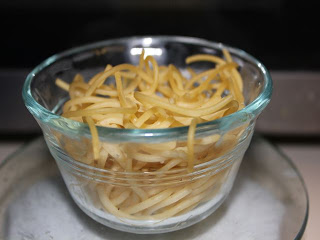This article caught my eye because anytime I got out for dinner I do some planning ahead of time. Now I always know what I want to eat before I want in the door of a restaurant because I want to know how many calories are in the foods I am eating. I go to the restaurants website before leaving the house for the calorie count. After reading this article it makes me wonder hum… keep reading! Great article!
By Lisa Collier Cool
Americans are eating out more than ever before, but can we trust the calorie counts on restaurant menus? A new study published July 19 in Journal of American Medical Association (JAMA) suggests that these numbers should be taken with a grain of salt, since 40 percent of the foods analyzed had more calories than stated on the menu. 19 percent of the time, the count was off by 100 or more calories, with one belly-busting side dish that contained upwards of 1,000 more calories than claimed on the menu.
While many eateries do have trustworthy calorie counts, the US Department of Agriculture-funded study reported that the surprising rate of undercounts, especially for fattening foods, were hardly likely to be random error and could derail efforts to lose weight. The researchers tested 269 randomly selected foods purchased at 42 restaurants in three states. Here’s the skinny on the study:
Which restaurants were studied? The researchers tested takeout meals from quick-serve and sit-down eateries within 25 miles of Boston, Massachussetts, Little Rock, Arkansas, and 65 miles of Lafayette, Indiana. All were part of restaurant chains that ranked in the top 400 nationally for sales dollars in 2008 and provided nutritional information on their website. In each region, foods from seven quick-serve and seven sit-down restaurants were analyzed.
Which foods should you watch out for at sit-down restaurants? According to the study, main courses that seem to be better choices for those watching their weight (entrees purporting to have fewer than 600 calories per serving) “systematically contained more energy than stated,” thus impeding efforts to slim down amid a growing obesity epidemic. Sit-down restaurants tended to overstate the number of calories in main courses with more than 600 calories, the researchers found.
Which fast foods are most likely to contain hidden calories? Beware of misleading calorie counts on side dishes at quick-serve restaurants, since the actual calorie counts “were significantly higher than stated,” the researchers reported. The worst offenders were high-carb foods and dressed salads, both of which were much more likely to have incorrect counts that understated calories, compared to sandwiches.
How inaccurate are restaurant calorie counts overall? 60 percent of restaurant counts matched the researchers’ analysis. 40 percent were higher than the stated number by 10 or more calories, but only 19 percent were off by 100 or more calories, indicating that 81 percent of foods tested either had the right count or one that was within 99 calories of the actual count, which is reasonably accurate. However, 10 percent of foods tested averaged 289 calories higher than the number claimed by the restaurant. Bottom line: there is a 1 in 10 chance that your meal may be more fattening than the menu leads you to believe and a 1 in 5 chance that it harbors at least a few hidden calories.
How do restaurant calorie counts stack up to supermarket food labels?
Currently, there are no federal standards to mandate acceptable levels of accuracy for calorie counts in restaurant-purchased foods, while packaged-food regulations require that the measured energy content in a random sample of 12 units must average no more than 120 percent of the stated calorie count on the label.
Which foods were checked in the study? In sit-down restaurants, only entrees and side dishes were analyzed, including pizza, sandwiches, salads, pasta dishes, omelets, ethnic dishes, soups, and meat or fish-based entrees, while all menu items from quick-serve eateries were included, except beverages, self-serve buffets, and kids’ meals. In each case, a serving was deemed the entire amount served, except for pizza, for which a portion was deemed the number of slices defined as a serving by the restaurant.
How were the foods tested? One serving of each food was ordered for takeout, then was analyzed with a bomb calorimetry technique that measures the heat of combustion of freeze-dried foods to determine the energy content. This method is considered extremely accurate. For the 10 percent of foods that had the greatest discrepancies with the restaurant’s calorie count, another serving was purchased and analyzed, usually with similar results.
Why is the research important? Studies show a strong link between eating out frequently and increased risk for obesity. Misleading calorie counts may compound the problem, since nearly half of Americans consume at least three restaurant meals per week, and 12 percent eat out more than seven times a week. New legislation will soon require many restaurants to provide calorie data. Your best defenses against inaccurate counts are selecting items that don’t contain gravy or dressing, choosing baked or grilled foods over fried, opting for more vegetables and less meat, and eating only half of the food on your plate, since restaurant portions tend to be large.



















